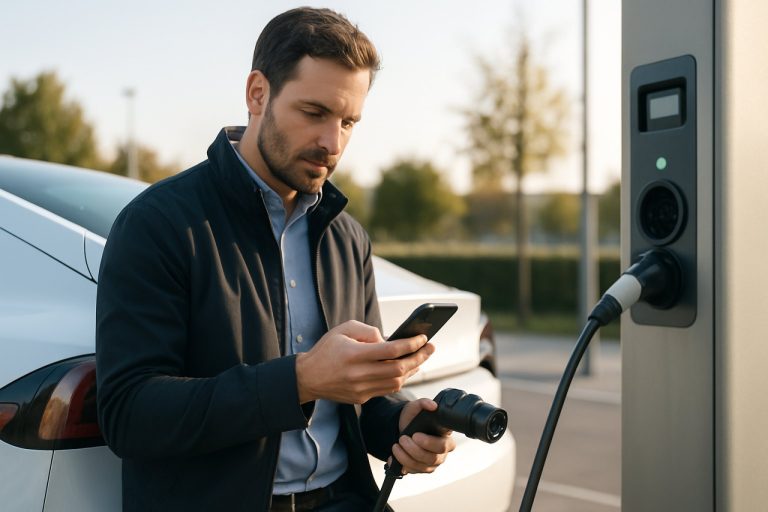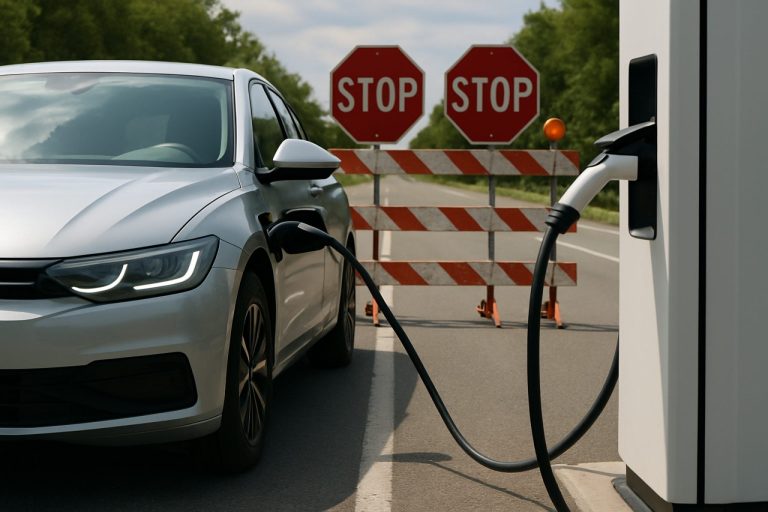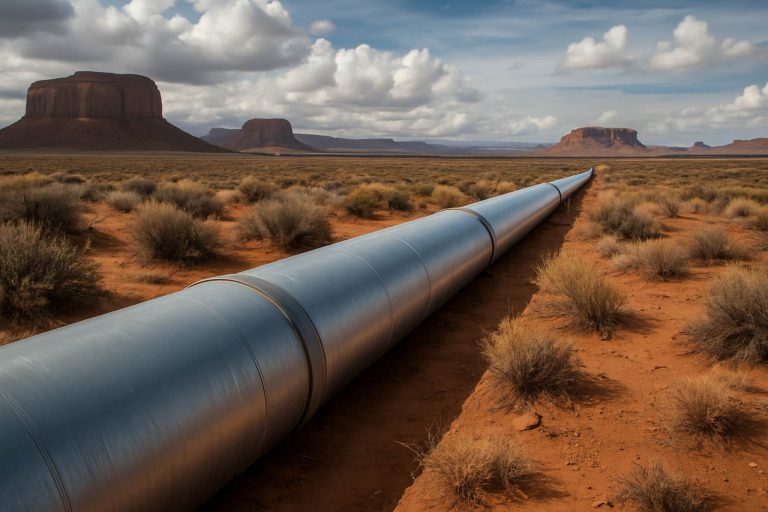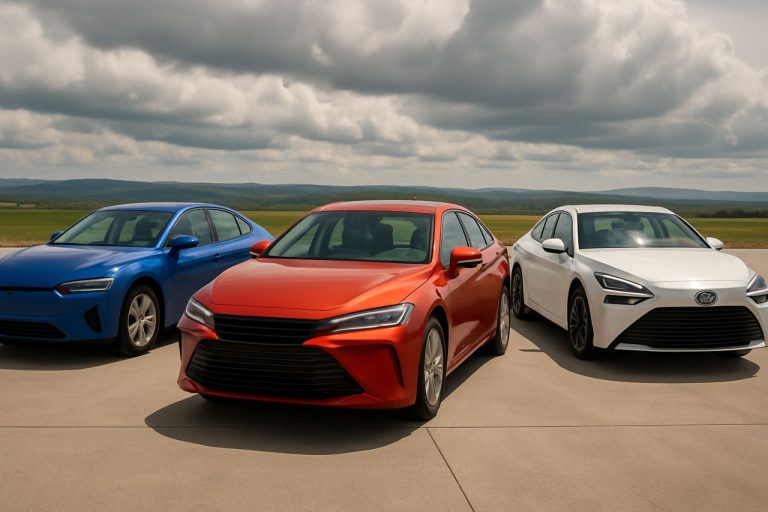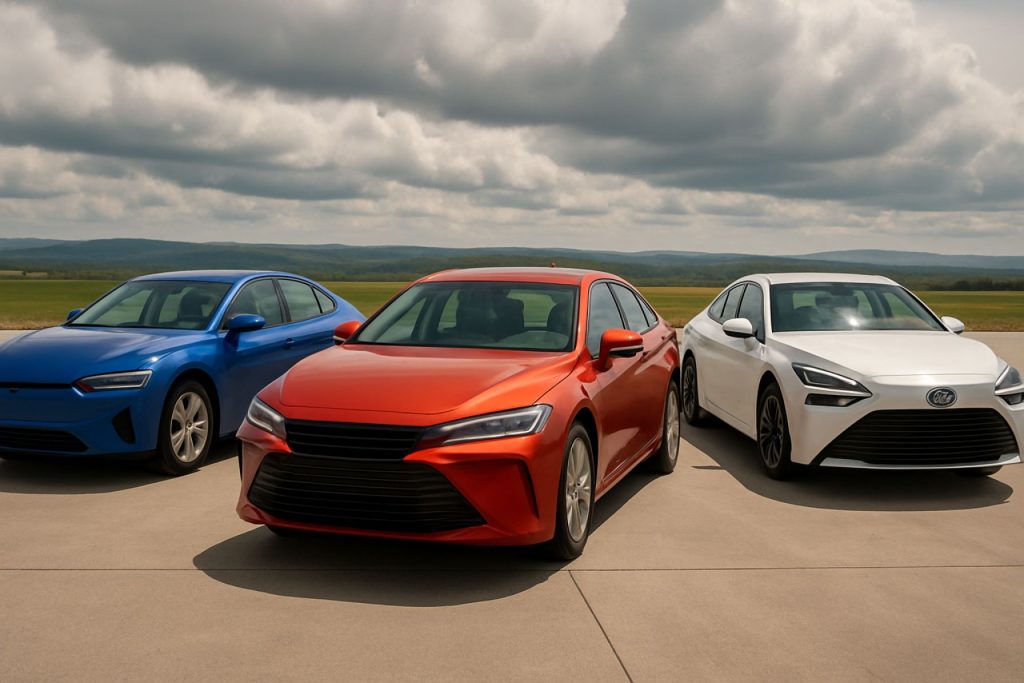
- The transition to alternative engines is accelerating, with electric vehicles (EVs) leading public awareness and adoption.
- Hydrogen fuel-cell technology, developed by companies like Toyota, offers rapid refueling and scalable potential, but hinges on significant infrastructure improvements.
- Ethanol, biodiesel, and renewable diesel are making a strong comeback, enabling carbon-neutral operation in sectors like agriculture and shipping using existing engine technologies.
- Industries beyond automotive—like aviation and maritime—are blending electrification with hydrogen and synthetic fuels to achieve sustainable mobility.
- Collaboration across agriculture, automotive, aerospace, and maritime is essential; true carbon neutrality will rely on a diverse mix of alternative engines, clean fuels, and innovative partnerships.
At the center of today’s green revolution, an intense race unfolds on highways, in factories, and even in the skies. While electric vehicles dominate the headlines and city streets, a behind-the-scenes contest is reshaping the very core of how we move—and who leads the charge.
Sparks Fly in the Electric Revolution
Electric vehicles (EVs) have captured the world’s imagination, sending a clear signal: the era of the noisy internal combustion engine is giving way to the silent hum of electric motors. Plug-in hybrids have offered a transition — a safety net for drivers wary of charging deserts, yet eager to shrink their carbon footprint. With megabrands relentlessly expanding their Tesla-style EV lineups, the dream of emissions-free commuting feels tantalizingly close.
But on backroads, windswept farms, and research parks, innovators know that batteries alone cannot lift us into a cleaner, more resilient future.
Hydrogen: A Vision in Blue
Enter hydrogen, the gas that packs a punch. Industry leaders like Toyota have spent decades refining fuel-cell technology, trading tailpipe pollutants for wisps of water vapor. Toyota stakes its reputation on this moonshot, rolling out models that embody a practical, scalable vision for tomorrow’s mobility. Their cars showcase how hydrogen engines promise lightning-fast refueling and the potential for mass adoption—given the right investments in infrastructure.
And yet, as hydrogen tries to seize silver in the alternative engine Olympics, another contender quietly sharpens its edge.
Ethanol’s Unexpected Comeback
Few predicted a renaissance for ethanol, long associated with cornfields and biofuel debates. Yet John Deere’s unveiling of a staggering 9.0-liter ethanol engine at Germany’s Agritechnica expo signaled a paradigm shift. The iconic green tractors that power American agriculture may soon run on plant-based fuels, drastically slashing carbon footprints where rural charging stations remain a fantasy.
Ethanol and its cousins—biodiesel, renewable diesel—offer a uniquely flexible solution. They work harmoniously with existing diesel tech, decarbonizing not just cars, but the tractors that till our soil and the ships that crisscross our oceans. The environmental math is simple: burning biofuels recycles the CO2 absorbed by crops, creating a loop that’s nearly carbon neutral, especially when factoring in advanced combustion technologies.
Beyond the Showroom Floor
Alternative engines are rewriting the playbook far beyond passenger cars. Aviation engineers, staring down the limits of battery weight, turn to hydrogen and synthetic fuels to rethink flight. Meanwhile, global giants like Yamaha team with British innovators such as Caterham, pooling brainpower to design the electric sports coupes and powertrains of tomorrow.
This new era is marked not by rivalry, but by remix and alliance. Breakthroughs erupt where seemingly unrelated industries overlap; agribusiness partners with aerospace, automotive consults maritime. The old boundaries blur, revealing a sprawling ecosystem of collaboration rooted in science, engineering integrity, and a shared imperative: to mitigate climate change now.
The Road Ahead: Coalitions, Not Competition
The takeaway is clear. No single engine, fuel, or technology can win this race alone. Carbon neutrality demands a toolbox approach—blending the surging popularity of electrics with the under-the-radar might of hydrogen and biofuels. By joining forces and championing innovation across sectors, we edge closer to cities with clearer air, farms with greener equipment, and skies alive with cleaner aircraft.
Sustainability, it turns out, thrives not in isolation, but in community—powered by bold partnerships, relentless experimentation, and the shared vision of a world that leaves fossil fuels behind.
Electric vs Hydrogen vs Biofuels: What’s REALLY Powering the Green Transportation Revolution?
The Real Story Behind the Green Engine Race
The green transportation revolution is far more complex than the electric vehicles (EVs) grabbing all the headlines. While Tesla and its EV rivals are dominating social media feeds, hydrogen, ethanol, and next-generation biofuels are quietly reshaping the global mobility landscape—and the reality is, this battle for a cleaner future is multifaceted, technological, and intensely collaborative.
What’s Driving the Shift Beyond Electric Vehicles?
While EVs are synonymous with sustainability, several key factors explain the increasing focus on alternatives like hydrogen and biofuels:
– Infrastructure Limitations: Charging deserts—regions with sparse EV charging options—still plague many rural and developing areas (source: International Energy Agency).
– Heavy Industry Needs: Batteries are too heavy or limited in power for sectors like aviation, agriculture, and shipping (World Economic Forum).
– Energy Diversity & Security: Over-reliance on one tech can create supply-chain vulnerabilities, as seen with lithium and rare earth mineral bottlenecks (IEA).
Hydrogen: Where Is It Winning & What’s Holding It Back?
Fast Facts:
– Toyota is a global leader in hydrogen fuel-cell technology, with the Mirai serving as a flagship model (Toyota).
– Refueling Time: Comparable to gasoline (3-5 minutes).
– Range: Similar to gas vehicles (over 400 miles for some models).
– Use Cases: Long-haul trucks (Nikola, Hyundai), city buses (China, Europe), and even trains in Germany.
– Emissions: Only water vapor at the tailpipe.
Unexplored Challenges:
– Hydrogen production is often fossil-fuel-based (so-called “gray hydrogen”); only “green hydrogen” from renewable-powered electrolysis offers true carbon neutrality.
– Infrastructure is ultra-limited: Just 60+ stations in the U.S., mostly in California, according to Department of Energy.
How-To: Hydrogen Vehicle Refueling Steps
1. Locate a hydrogen station via dedicated apps (example: H2Station).
2. Connect fueling nozzle—automated safety systems perform pressure checks.
3. Fill tank (as quick as gasoline).
4. Secure cap and drive away.
Industry Insight: Goldman Sachs predicts hydrogen will be a $1 trillion global market by 2050 but requires massive investment in renewable-powered production and distribution.
Ethanol & Biofuels: Their Surprising Modern Surge
Modern Innovations:
– John Deere’s 9.0-liter ethanol engine is a leap, proving biofuels can power heavy-duty applications with ultra-low emissions.
– Biodiesel/Renewable Diesel: Not just for cars—used in marine, aviation (sustainable aviation fuel – SAF), and public transit.
Real-World Benefits:
– Drop-in Compatibility: Existing diesel engines can often run on blended biofuels with little to no modification.
– Carbon Loop: Unlike fossil fuels, biofuels recycle CO₂ that crops absorbed, dramatically lowering net emissions.
Controversies & Limitations:
– Food vs. Fuel: Ethanol from corn or sugarcane can pressure food supplies and prices; advanced “cellulosic” biofuels from waste sidestep this (USDA, Nature Energy).
– Land Use: Monoculture crops for fuel can hurt biodiversity unless managed responsibly.
EVs: Still On Top, But Facing Headwinds
Specs & Pricing:
– Top Models (2024): Tesla Model 3, Ford Mustang Mach-E, Hyundai Ioniq 5.
– Battery Costs Fall: But raw material supply constraints loom for lithium, cobalt, nickel (source: BloombergNEF).
– Lifecycle Emissions: EVs produce average 50% less lifetime GHGs—but manufacturing batteries remains energy-intensive.
Reviews & Comparisons:
– Pros: Silent operation, low running costs, tax incentives.
– Cons: Charging speed, infrastructure gaps in rural zones, cold-weather range losses.
The Big Questions Answered
Which tech is most “future-proof”?
– Experts (like IEA and McKinsey) predict a mixed landscape: EVs dominate cities, hydrogen for long-haul and heavy-duty, biofuels for hard-to-electrify sectors.
Are hydrogen cars safe?
– Yes—tanks are reinforced, and industry protocols match or exceed gasoline safety standards.
How green are biofuels, really?
– Best-in-class biofuels (algae-based, waste-to-fuel) can slash emissions by 70-90%. First-gen corn bioethanol is less effective but still outperforms oil.
Market Forecasts & Industry Trends
– New EU standards push for 100% emissions-free new vehicles by 2035—with loopholes for hydrogen and advanced biofuels.
– Airlines go green: United, Delta, and others sign deals for sustainable aviation fuel.
– Startup boom: Players like Nikola, Plug Power, and ZeroAvia blaze new trails in hydrogen trucking and flight (Nikola).
Quick Actionable Recommendations
1. Drivers: Check if plug-in hybrids or flexible-fuel vehicles are available in your area—they offer a practical bridge.
2. Fleet operators: Explore partnerships with biofuel suppliers; many offer greenhouse gas audit services.
3. Rural/agricultural users: Watch John Deere and other OEMs for ethanol-compatible equipment rollouts.
4. Industry stakeholders: Diversify investments—not just in electrification, but also in hydrogen production and advanced biofuels.
Pros & Cons Overview
| Technology | Pros | Cons |
|———————–|—————————————-|—————————————-|
| Electric Vehicles | Clean, efficient, low operating cost | Charging infra still developing, raw material risk |
| Hydrogen | Fast refuel, long range, zero emissions| Tricky infrastructure, cost of green hydrogen |
| Biofuels | Uses existing engines, quick deployment| Land use, food supply impact, varying emissions |
Security & Sustainability
– Cybersecurity attention: Smart EVs need robust protection against hacking, while hydrogen stations use rigorously tested pressure monitoring.
– Sustainability: True impact depends on how electricity/hydrogen is made, and whether crops are grown renewably.
Final Prediction: The Hybrid Future
The global mobility race will be won not by one technology, but through strategic alliances, policy support, and relentless innovation across the EV, hydrogen, and biofuel spaces. Expect automakers and energy suppliers to increasingly merge efforts for multi-fuel infrastructures, smart grid integration, and joint R&D ventures.
Curious for more? Explore the innovators leading this charge at Toyota, Tesla, and Nikola as this race heats up!
—
Quick Tip: Before your next vehicle or equipment purchase, consider your local refueling or charging options—choose a model that matches today’s infrastructure but is also ready for tomorrow’s rapidly evolving energy landscape.
